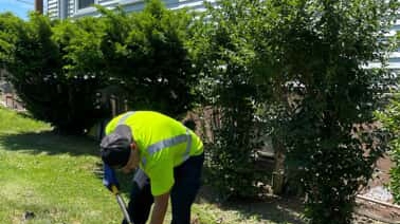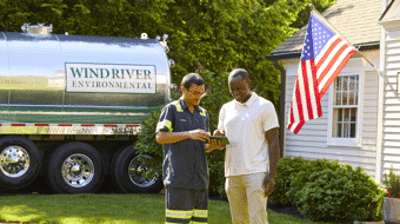As long as you take care of your septic system, you’ll be fine! There’s no reason to stress, even if you’re accustomed to living somewhere with a sewer system.
Septic systems work in the same way traditional sewer systems do at the start. Water from your sink, toilet, washing machine, or any other source, leaves your house. It goes through your pipes and into the septic tank underground. Here, the liquid and solid waste separate. The liquid passes right through to the distribution box. The solid waste sinks to the bottom of the septic tank, unable to get through to the next stage in the process.
Once the liquid waste (or effluent) reaches the distribution box, it flows through a leach field or drain field, where it spreads into the soil. The soil is able to filter the wastewater and remove harmful bacteria. The solids trapped in the tank break down into liquid due to the bacteria levels in a healthy septic system, and then also flow into the leach field.
Where is my septic tank?
Your septic tank is underground and is connected to your house by pipes. This is also where the distribution box and the leach field are located. If you’re not sure exactly where it is in your yard, try and locate a septic tank map or inspect your yard for the general area. Discolored grass can often mark the location of your septic tank. If you’re a Wind River Environmental customer, we already have this information for you and if you aren’t yet, we provide locating services.
How can I ensure a healthy septic system?
It’s important to keep your septic system working efficiently. A compromised septic system can lead to major problems. First, make sure to never flush or wash something down your drain that can cause blockage. Objects other than water and human waste can cause issues that require professional cleaning. Be sure anything other than these two materials are labeled safe for septic. If not, you will need to consider additives to increase your bacterial levels in your tanks.
Another recommended step to keep your septic system functioning at its best is preventative maintenance. Preventative maintenance includes pumping your septic tank, cleaning the filter, and adding septic system treatment products. Pumping is important for clearing sludge and debris from your septic tank to avoid costs associated with major repairs or replacements. If you have a filter, clean it often so it can continue blocking harmful materials from entering your tank.
Most septic tanks require owners to pump every year or two. Frequency of pumping for your tank can differ due to a number of factors including use and size of the tank. We offer both pumping and drain cleaning, as well as treatment additives so you can maintain a healthy functioning septic system.
What else do I need to know about my septic tank?
If you just bought a home with a septic system or are just looking for assistance with managing yours, Wind River Environmental is always available to help. Don’t hesitate to contact us and schedule service!


.2504171222540.png)

